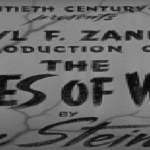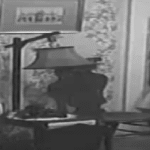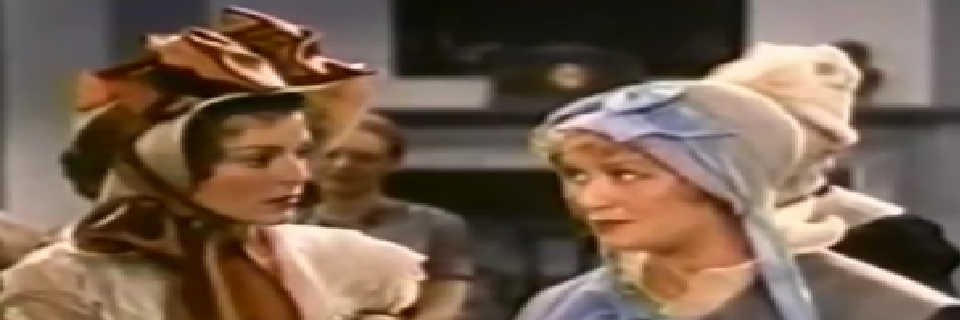Becky Sharp, directed by Rouben Mamoulian in 1935, holds a special place in cinema history not only for its narrative but for being the first feature-length film shot entirely in three-strip Technicolor. Based on William Makepeace Thackeray’s novel Vanity Fair, the film distils the sprawling satire into a tightly focused character study of Becky Sharp, a woman of ambition, wit and ruthless determination, navigating the rigid and often hypocritical social hierarchy of early 19th-century England.
Set against the backdrop of the Napoleonic Wars, the film opens with Becky, a clever and spirited young woman of low birth, leaving Miss Pinkerton’s Academy for Young Ladies. Unlike her friend Amelia Sedley, a sweet and passive girl from a wealthy background, Becky has no family connections or fortune to rely on. Her only assets are her charm, intelligence and a refusal to be confined by the expectations placed upon women of her class. From the start, Becky is portrayed as someone who sees through the pretensions of society and is willing to manipulate them for her own gain.
She begins her ascent into society by securing a position as a governess to the Crawley family. There she meets Rawdon Crawley, a roguish military officer and the younger son of a wealthy aristocratic household. Their relationship, fuelled by mutual attraction and a shared sense of opportunism, quickly becomes central to Becky’s social ambitions. Though their marriage is at first secret and somewhat scandalous, Becky believes it will grant her access to higher social circles. However, she soon discovers that navigating society’s whims is far more complicated than anticipated, especially when fortune and favour rest in the hands of powerful individuals such as Sir Pitt Crawley and his wealthy sister, Miss Crawley.
Mamoulian’s film compresses much of Thackeray’s episodic structure to focus more tightly on Becky’s character and journey. As played by Miriam Hopkins, Becky is vibrant, complex and often morally ambiguous. She is neither wholly admirable nor detestable. Her cunning, while sometimes ruthless, is shown as a necessary weapon for a woman in a world that offers her few other options. Hopkins infuses her performance with a restless energy, giving Becky a combination of poise, humour and underlying vulnerability. The audience is never entirely sure whether to root for her or to recoil at her manipulations, which makes her all the more compelling.
Visually, Becky Sharp was a revelation for its time. The Technicolor process brought an unprecedented richness to the film’s costumes, interiors and landscapes. The vibrant palette enhances the theatricality of the settings, drawing attention to the artificiality of the world Becky inhabits. Lavish ballrooms, ornate drawing rooms and gaudy uniforms reflect not only wealth but the shallowness of those who parade within them. In contrast, Becky’s moments of genuine feeling, of loss or isolation, often occur in simpler, more subdued environments. Mamoulian uses colour not just for spectacle but as an emotional counterpoint to the narrative.
Throughout the film, Becky moves through various strata of society with chameleon-like adaptability. She flatters Miss Crawley, charms suitors, manages servants and even manipulates her way into favour with influential courtiers. Her ascent, however, is always precarious. Just as she begins to establish herself, scandal or misfortune strikes. The most dramatic of these downturns comes after her husband, Rawdon, is disinherited and imprisoned for debt, leaving Becky exposed and vulnerable. Despite her efforts to maintain appearances, the social elite begin to turn on her. Once valued for her vivacity, she becomes a figure of suspicion and judgement.
Amelia, who functions as Becky’s moral and emotional opposite, remains in the background for much of the film but serves as a reminder of the conventional path Becky might have taken. Her quiet suffering, loyalty and goodness are contrasted with Becky’s flamboyant self-interest. Yet the film does not entirely reward Amelia’s virtue. Her passivity often leads her to be exploited or ignored. Becky, for all her faults, is at least the architect of her own fate. The contrast between them highlights the limited roles available to women and the harsh consequences of trying to exceed them.
One of the film’s strengths lies in its refusal to offer a neatly resolved ending. Becky’s trajectory is not one of redemption or complete downfall, but something more ambiguous. In the final scenes, she is no longer the sparkling socialite but neither is she entirely defeated. Her pride remains intact, and there is a hint of reconciliation with Amelia that suggests some measure of growth. The film leaves open the question of whether Becky has truly changed or simply adapted once more to survive.
What makes Becky Sharp particularly interesting from a modern perspective is how it interrogates themes of class, gender and social hypocrisy, even within the constraints of 1930s Hollywood. Becky is a woman who refuses to accept her assigned place. She uses the tools available to her—beauty, intelligence and manipulation—to try to rise above her station. Yet the society she seeks to join is shown to be shallow, fickle and corrupt. In many ways, Becky’s flaws mirror those of the world she inhabits. Her moral compromises reflect the compromises demanded by a system designed to exclude her.
Mamoulian’s direction is stylish and confident. He uses fluid camera movements and carefully composed shots to bring a sense of motion and drama to scenes that might otherwise have felt stagey. The pacing, though sometimes uneven due to the compression of a complex novel into a relatively short runtime, is generally effective in keeping the viewer engaged. The dialogue, while occasionally stilted, often sparkles with wit and irony, especially in Becky’s interactions with those she seeks to influence.
In conclusion, Becky Sharp is more than a historical milestone in colour filmmaking. It is a vivid, often biting exploration of ambition and identity, centred around one of literature’s most intriguing female protagonists. The film captures both the allure and the emptiness of social aspiration, as well as the emotional toll exacted on those who dare to climb. Through its striking visuals, strong central performance and keen social observations, Becky Sharp remains a fascinating artefact of both cinematic and literary adaptation, offering a complex portrait of a woman determined to shape her own destiny, whatever the cost.







